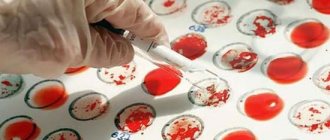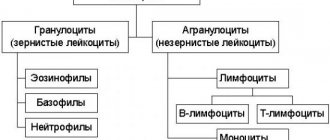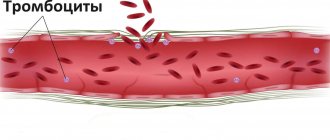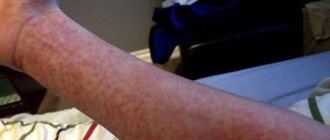Blood is one of the most important connective tissues of the human body, without which its functioning and life are impossible. Thanks to the discovery of blood groups, safe transfusion or blood transfusion became possible, which has already saved millions of people. But what determines whether blood belongs to one type or another, what types are compatible with each other, and what blood type will a child have from parents with different groups? Many of these questions can already be answered with 100% accuracy thanks to long-standing medical discoveries.
The key to the formation of a blood group is its red blood cells. These cells are not just oxygen carriers. The surface of red blood cells is covered with specific molecules - antigens. Today, a little more than 230 types of red blood cell antigens are known, which have made it possible to form 35 systems for dividing blood into different groups.
But two remain significant for transfusion: the AB0 and Rh (RhD) systems. The first classification distinguishes four blood groups based on the presence or absence of antigens A and B:
- 0 – 1 blood group, these antigens are completely absent;
- A – blood group 2, bodies have only antigen A;
- B – blood group 3, red blood cells have antigen B;
- AB – blood group 4, red blood cells have both antigens.
According to statistics, the most common are the first positive and second positive blood groups. Among the world's population, they account for about 40 and 34% of carriers, respectively. Rare blood groups are third negative and fourth negative: only 1% of people each have a similar set of antigens in their red blood cells.
The Rh (RhD) system divides the above groups according to the type of Rh factor: positive or negative. Rhesus is determined by the presence of the D antigen. According to statistics, it is absent in approximately 15% of people, which is why they have a Rh-negative blood group.
To initially determine the blood group, fairly simple laboratory procedures are performed. Anti-A and anti-B zoclions are applied to a special tablet, which are then mixed with a drop of the patient’s blood being tested.
After this, the laboratory assistant observes the reaction and draws conclusions about whether the blood belongs to one group or another. To determine the Rh factor, a similar procedure is carried out, in which anti-D tsoklion acts as a marker.
Blood group determination
It is noteworthy that some doctors performed blood transfusions back in the 17th century. However, this had little to do with medical research and actual treatment of people.
For example, the French doctor Jean-Baptiste Denis treated aggressive patients with mental disorders by transfusing them with the blood of lambs. According to the doctor, the gentleness of the cute animal was supposed to soften the patient’s violent temper. Fortunately, the court prohibited such methods of treatment.
However, Themis’s decision was made only after one of Denis’s charges died after a dangerous manipulation.
In the 19th century, blood transfusion was actively pursued in England. The first successful blood transfusion in Russia was carried out in 1832. As a result of the manipulation, G. Wolf managed to save a patient with uterine bleeding that occurred after a difficult birth.
Naturally, transfusions often ended in complications, because no one determined the compatibility of blood groups. The conditions for compatibility of blood of different patients were considered only at the beginning of the 20th century.
Karl Landsteiner
The Austrian immunologist Karl Landsteiner first drew attention to the individual differences in human blood.
He confirmed his assumptions experimentally, mixing the blood serum of some patients with red blood cells from other donors.
The aggregation reactions of components, which manifested themselves in some cases, made it possible to identify 4 blood groups, which became the basis of the AB0 system. Later, in 1930, Landsteiner received the Nobel Prize for his invaluable discoveries.
The compatibility of the blood groups of the donor and the patient is clearly presented in the table:
Blood groups: transfusion compatibility table
Thus, the owner of the first blood group is a universal donor, and the owner of the fourth is a universal recipient.
Child's blood type: principles of inheritance of antigens
Blood type and Rh factor are heritable traits, the transmission of which is subject to the laws of genetics. Therefore, knowing the blood types of the parents, it is possible to calculate with great accuracy the options for what blood type the child will have.
Most human genes are present in the body in two copies. Each parent passes on one replica to the heir, which is selected randomly.
For example, the owner of blood group 4 with antigens A and B will give the child a copy of A or B, the carrier of group 2 with alleles A and 0 will pass on antigen A to the offspring, or the baby’s red blood cells will not have the antigen at all.
More clearly, the possible variants of the child’s blood type are presented in the table:
Child's blood type: inheritance table from parents
But there are also rare exceptions, when the baby exhibits a set of genes that is distinguishable from that calculated by science. Such cases are called the “Bombay phenomenon” and occur no more often than one case per 10 million people.
Since alleles are selected randomly during genotype transfer, a situation may arise when the child receives from the father an antigen that is not present in the mother and can be perceived by her body as foreign.
An immunological conflict between blood groups arises, which can make the course of pregnancy less rosy. Fortunately, such incompatibility usually occurs quite easily and does not require special treatment.
But when planning a child, it is better to familiarize yourself with the compatibility table of the blood groups of the father and mother in advance.
Compatibility table of mother and father by blood type
More serious for the expectant mother and the unborn baby is the so-called Rh conflict. If a woman with negative Rhesus carries a child with positive Rhesus, her body may begin to produce antibodies that are aggressive towards the baby’s red blood cells.
Since during childbirth some of the baby’s blood enters the mother’s circulatory system, the woman’s immune system begins to intensively produce antigens that accumulate in the body.
Therefore, each subsequent pregnancy with an Rh-positive child may be more difficult than the previous one, and antibodies will have a stronger effect on the development of the fetus.
Rh conflict between mother and child: table
Fortunately, special therapy has been developed to alleviate the immunological Rh conflict and create normal conditions for fetal development. Additionally, immediately after childbirth, mothers can be given a drug containing anti-Rh antibodies, which prevent the woman from immunizing and destroy foreign Rh-positive red blood cells.
The human body is an amazing mechanism, delicately working according to its own unique laws. Therefore, it is very important to take a responsible approach to pregnancy planning and try to take into account any possible risks of complications. And don’t forget about the importance of donation, because just one trip to a blood donation center can save someone’s life.
How do we inherit blood type from our parents?
In the modern world, it is no longer a secret to anyone that there are 4 types of human blood. They can be identified using the AB0 system. Where A and B are antigens on the surface of red blood cells, and 0 is their absence.
Their presence or absence is determined genetically, just like other traits. According to the recessive-dominant principle.
However, it is still a mystery to many: how do we inherit our blood type from our parents?
Let's first understand what blood groups themselves mean:
- Blood group 1 or 0 – contains neither A nor B antigens;
- 2nd blood group or A – contains only A antigens;
- 3rd blood group or B – contains only B antigens;
- 4th blood group or AB – contains A and B antigens;
So, each of the antigens is inherited separately, i.e. each parent passes either “+” or “-” to the child. Moreover, if at least one parent transmitted the presence of the antigen, then it will appear as “+”.
What it looks like:
- 1st blood group is only 00;
- 2nd blood group A0 or AA;
- 3rd blood group or B0 or BB;
- 4th blood group AB only;
The table clearly shows how we inherit our blood type from our parents:
How do we inherit blood type from our parents?
Blood group inheritance table
| Mother's blood type | Father's blood type | |||||
| I (00) | II (A0) | II (AA) | III (B0) | III (BB) | IV (AB) | |
| I (00) | I (00) - 100% | I (00) — 50% II (A0) — 50% | II (A0) - 100% | I (00) — 50% II (B0) — 50% | III (B0) - 100% | II (A0) — 50% III (B0) — 50% |
| II (A0) | I (00) — 50% II (A0) — 50% | I (00) - 25% II (A0) - 50% III (AA) - 25% | II (AA) - 50% II (A0) - 50% | I (00) — 25% II (A0) — 25% III (B0) — 25% IV (AB) — 25% | IV (AB) - 50% III (B0) - 50% | II (AA) - 25% II (A0) - 25% III (B0) - 25% IV (AB) - 25% |
| II (AA) | II (A0) - 100% | II (AA) - 50% II (A0) - 50% | II (AA) - 100% | IV (AB) - 50% II (A0) - 50% | IV (AB) - 100% | II (AA) - 50% IV (AB) - 50% |
| III (B0) | I (00) — 50% III (B0) — 50% | I (00) — 25% II (A0) — 25% III (B0) — 25% IV (AB) — 25% | IV (AB) - 50% II (A0) - 50% | I (00) — 25% III (BO) — 50% III (BB) — 25% | III (BB) - 50% III (BO) - 50% | II (A0) - 25% III (B0) - 25% III (BB) - 25% IV (AB) - 25% |
| III (BB) | III (B0) - 100% | IV (AB) - 50% III (B0) - 50% | IV (AB) - 100% | III (BB) - 50% III (B0) - 50% | III (BB) - 100% | IV (AB) - 50% III (BB) - 25% |
| IV (AB) | II (A0) — 50% III (B0) — 50% | II (AA) - 25% II (A0) - 25% III (B0) - 25% IV (AB) - 25% | II (AA) - 50% IV (AB) - 50% | II (A0) - 25% III (B0) - 25% III (BB) - 25% IV (AB) - 25% | IV (AB) - 50% III (BB) - 50% | II (AA) - 25% III (BB) - 25% IV (AB) - 50% |
Blood groups
INHERITANCE OF BLOOD TYPE BY A CHILD
Often in the maternity hospital, mothers are asked the question: “What cut group does my child have?” And then they think long and painfully: “Why did they say that my baby has the first blood type, if my husband and I have the second?”
- To answer this question, let us remember what blood groups are and what laws of nature they “obey”.
- At the beginning of the last century, scientists proved the existence of 4 blood groups.
- The Austrian scientist Karl Landsteiner, mixing the blood serum of some people with red blood cells taken from the blood of others, discovered that with some combinations of red blood cells and serum, “gluing” occurs - red blood cells stick together and form clots, but with others - not.
While studying the structure of red blood cells, Landsteiner discovered special substances. He divided them into two categories, A and B, highlighting a third, where he included cells that did not contain them. Later, his students - A. von Decastello and A. Sturli - discovered red blood cells containing A- and B-type markers simultaneously.
As a result of research, a system of dividing blood groups emerged, which was called ABO. We still use this system today.
- I (0) – blood group is characterized by the absence of antigens A and B;
- II (A) – established in the presence of antigen A;
- III (AB) – B antigens;
- IV(AB) – antigens A and B.
The AB0 system has revolutionized scientists' understanding of the properties of blood. Genetic scientists began to study them further. They proved that the principles of inheritance of a child's blood type are the same as for other characteristics. These laws were formulated in the second half of the 19th century by Mendel, based on experiments with peas, familiar to all of us from school biology textbooks.
So how are blood groups inherited by a child according to Mendel’s law?
- According to Mendel's laws, parents with blood group I will give birth to children who lack A- and B-type antigens.
- Spouses with I and II have children with the corresponding blood groups. The same situation is typical for groups I and III.
- People with group IV can have children with any blood group, with the exception of I, regardless of what type of antigens are present in their partner.
- The inheritance of a blood group by a child is most unpredictable when the union of owners with groups II and III occurs. Their children are equally likely to have any of the four blood types.
- The exception to the rule is the so-called “Bombay phenomenon”. Some people have A and B antigens in their phenotype, but do not manifest themselves phenotypically. True, this is extremely rare and mainly among Indians, which is why it got its name.
Rh factor inheritance
The Rh factor is determined by a dominant-recessive trait, while a positive Rh factor is a dominant, and a negative Rh factor is a recessive trait. Depending on what genetic set the child inherits, his phenotype will appear. So, if at least one plus is present in the gene (a sign of positive Rh), the baby will have a Rh-positive factor. But negative Rh can only appear when inheriting two minuses, i.e. absolute recessive trait.
Sometimes both parents have dominant Rh positive blood, and the child is born with Rh negative blood. This fact indicates that both parents are heterozygous and each of them passed on a recessive trait to the baby, which could not appear in the parents, because they have a second dominant sign of positive Rhesus.
It often happens that a child is born with an identical blood type and Rh factor of one of the parents. But this does not mean that he inherited his father's or mother's blood. In this case, each of the parents passed on half the information to the fetus, but it merged in such a way that it phenotypically appeared as in one of the parents. For example, a mother with III (BB) and a father with I (00) gave the baby a B0 set, and he will also have a third blood type like his mother, but the genetic code will be different.
Child's blood type: principles of inheritance of antigens
Blood type and Rh factor are heritable traits, the transmission of which is subject to the laws of genetics. Therefore, knowing the blood types of the parents, it is possible to calculate with great accuracy the options for what blood type the child will have.
Most human genes are present in the body in two copies. Each parent passes on one replica to the heir, which is selected randomly. For example, the owner of blood group 4 with antigens A and B will give the child a copy of A or B, the carrier of group 2 with alleles A and 0 will pass on antigen A to the offspring, or the baby’s red blood cells will not have the antigen at all. More clearly, the possible variants of the child’s blood type are presented in the table:
Child's blood type: inheritance table from parents
But there are also rare exceptions, when the baby exhibits a set of genes that is distinguishable from that calculated by science. Such cases are called the “Bombay phenomenon” and occur no more often than one case per 10 million people.
Since alleles are selected randomly during genotype transfer, a situation may arise when the child receives from the father an antigen that is not present in the mother and can be perceived by her body as foreign. An immunological conflict between blood groups arises, which can make the course of pregnancy less rosy. Fortunately, such incompatibility usually occurs quite easily and does not require special treatment. But when planning a child, it is better to familiarize yourself with the compatibility table of the blood groups of the father and mother in advance.
Compatibility table of mother and father by blood type
More serious for the expectant mother and the unborn baby is the so-called Rh conflict. If a woman with negative Rhesus carries a child with positive Rhesus, her body may begin to produce antibodies that are aggressive towards the baby’s red blood cells. Since during childbirth some of the baby’s blood enters the mother’s circulatory system, the woman’s immune system begins to intensively produce antigens that accumulate in the body. Therefore, each subsequent pregnancy with an Rh-positive child may be more difficult than the previous one, and antibodies will have a stronger effect on the development of the fetus.
Rh conflict between mother and child: table
Fortunately, special therapy has been developed to alleviate the immunological Rh conflict and create normal conditions for fetal development. Additionally, immediately after childbirth, mothers can be given a drug containing anti-Rh antibodies, which prevent the woman from immunizing and destroy foreign Rh-positive red blood cells.
The human body is an amazing mechanism, delicately working according to its own unique laws. Therefore, it is very important to take a responsible approach to pregnancy planning and try to take into account any possible risks of complications. And don’t forget about the importance of donation, because just one trip to a blood donation center can save someone’s life.
LiveJournal
It will be interesting to read:
Viral batteries: new batteries created by bacteriophages
Human viruses: the most dangerous and deadly diseases
Northern Lights: New Scientific Research
Tags: blood type, child's blood type, blood groups: table, determination of blood group, Rh factor
A little history
Back in the 8th century BC, the works of the poet Homer described the use of blood for medicinal purposes. However, in those distant times (both in the 6th century and in the Middle Ages), people could only think of using this component as a healing drink. It was believed that drinking blood promotes rejuvenation.
The circulatory system was described in more or less detail only in 1628. Scientist William Harvey determined the basic principles and laws of blood circulation in the body. It was thanks to his work that subsequent scientists were able to develop a blood transfusion technique.
On a note!
The first blood transfusion took place in 1667. It was successfully carried out by Jean-Baptiste Denis, a French scientist and personal physician to King Louis XIV. On his orders, sheep blood, collected by using leeches, was transfused into a 15-year-old boy. And the strangest thing is that he survived!
First transfusion to determine blood type: biology with lamb
The use of human blood for the same purposes was made only in the 18th century. To save his patient, obstetrician James Blundell transfused her with her husband's blood.
Determining blood type: a biology essay will tell you how this began to happen in people
Despite the active practice of blood transfusions since then, the mortality rate of patients was still extremely high. And all because such a concept as blood groups was discovered only in 1901, and in 1940 the concept of the Rh factor appeared.











